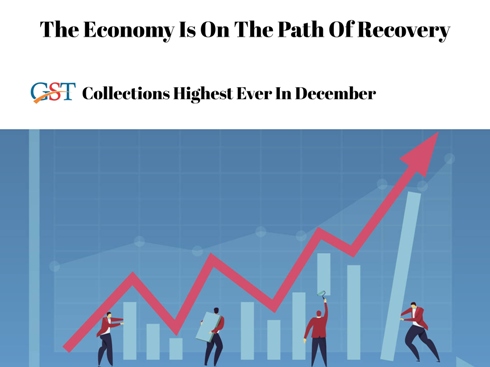

By A Special Correspondent
First publised on 2021-01-01 10:00:03
With GST collections at Rs. 1,15,174 lakh crore in December being the highest since the integrated tax system was introduced in the country, the economy seems to be well on the path of recovery. The collections showed that domestic revenues had jumped by 8 percent and import by 27 percent than last month. Year-on-year, the collections were 12 percent higher than December 2019. Filing of GSTR-3B returns has also jumped substantially.
The government said that "this is the highest growth in monthly revenues for the last 21 months. This has been due to combined effect of the rapid economic recovery post-pandemic and the nation-wide drive against GST evaders and fake bills with many systemic changes introduced recently, which have led to improved compliance".
The finance ministry statement spells out the reasons succinctly. The economy is recovering fast and the efforts of the government in providing relief packages and the policy of the RBI in resisting the temptation to mop up excess liquidity in the system despite inflation being above the range specified by the MPC and keep an accommodative stance have borne fruit. Demand is picking up across the board (as reflected in the rise in Purchase Manager's Index). Compliance has also jumped up due to the drive against evaders and cross checking of uploaded data.
But the only worry is the continued decline in the core sector. The eight key core sectors contracted by 2.6 percent in November. It was the 9th straight month of decline. It is a well known fact that vigorous economic recovery happens when core sectors perform well as they set off a chain reaction which propels all sectors of the economy. The government has till now resisted all appeals to invest heavily in infrastructure. But with tax collections buoyant, it should seriously consider heavy investments to provide a bigger impetus to the revival.











